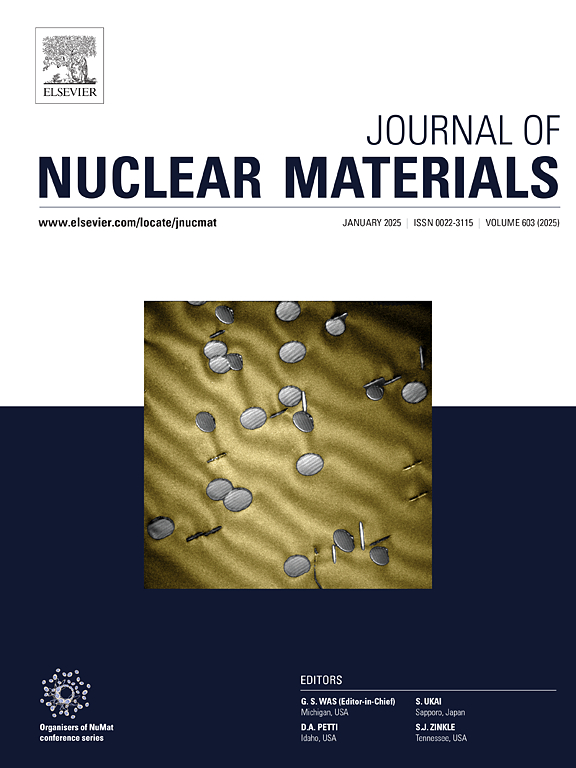Enhanced He irradiation-resistance of M/A-site two-component MAX phase revealed via defect evolution
IF 2.8
2区 工程技术
Q3 MATERIALS SCIENCE, MULTIDISCIPLINARY
引用次数: 0
Abstract
To enhance the He irradiation-resistance of the MAX phase, the irradiation-induced defect evolution of the Ti3SiC2-based two-component MAX phase has been investigated by First Principles. This clarifies the laws and mechanisms of irradiation damage in different structural two-component MAX phases, which offers a crucial reference for the screening of new nuclear structural materials. It was found that the M-site solid solution promoted the vacancies formation, inhibited interstitial dissolution of He, and reduced the damage to atomic stability caused by He-vacancies. The A-site solid solution decreased the formation energy of antisite defects and enhanced the resistance to damage induced by vacancies. He bubbles are less likely to form because both two-component MAX phases prevent He atoms from migrating and binding within the lattice and interfaces. Furthermore, the degree of lattice distortion affected the degree of property alteration and the tendency, which made the comprehensive performance of (Ti0.5Ta0.5)3SiC2 and Ti3(Si0.5Al0.5)C2 better. The difference in properties resulted from the combined effect of the interatomic binding strength and the mixed bonding type.
求助全文
约1分钟内获得全文
求助全文
来源期刊

Journal of Nuclear Materials
工程技术-材料科学:综合
CiteScore
5.70
自引率
25.80%
发文量
601
审稿时长
63 days
期刊介绍:
The Journal of Nuclear Materials publishes high quality papers in materials research for nuclear applications, primarily fission reactors, fusion reactors, and similar environments including radiation areas of charged particle accelerators. Both original research and critical review papers covering experimental, theoretical, and computational aspects of either fundamental or applied nature are welcome.
The breadth of the field is such that a wide range of processes and properties in the field of materials science and engineering is of interest to the readership, spanning atom-scale processes, microstructures, thermodynamics, mechanical properties, physical properties, and corrosion, for example.
Topics covered by JNM
Fission reactor materials, including fuels, cladding, core structures, pressure vessels, coolant interactions with materials, moderator and control components, fission product behavior.
Materials aspects of the entire fuel cycle.
Materials aspects of the actinides and their compounds.
Performance of nuclear waste materials; materials aspects of the immobilization of wastes.
Fusion reactor materials, including first walls, blankets, insulators and magnets.
Neutron and charged particle radiation effects in materials, including defects, transmutations, microstructures, phase changes and macroscopic properties.
Interaction of plasmas, ion beams, electron beams and electromagnetic radiation with materials relevant to nuclear systems.
 求助内容:
求助内容: 应助结果提醒方式:
应助结果提醒方式:


